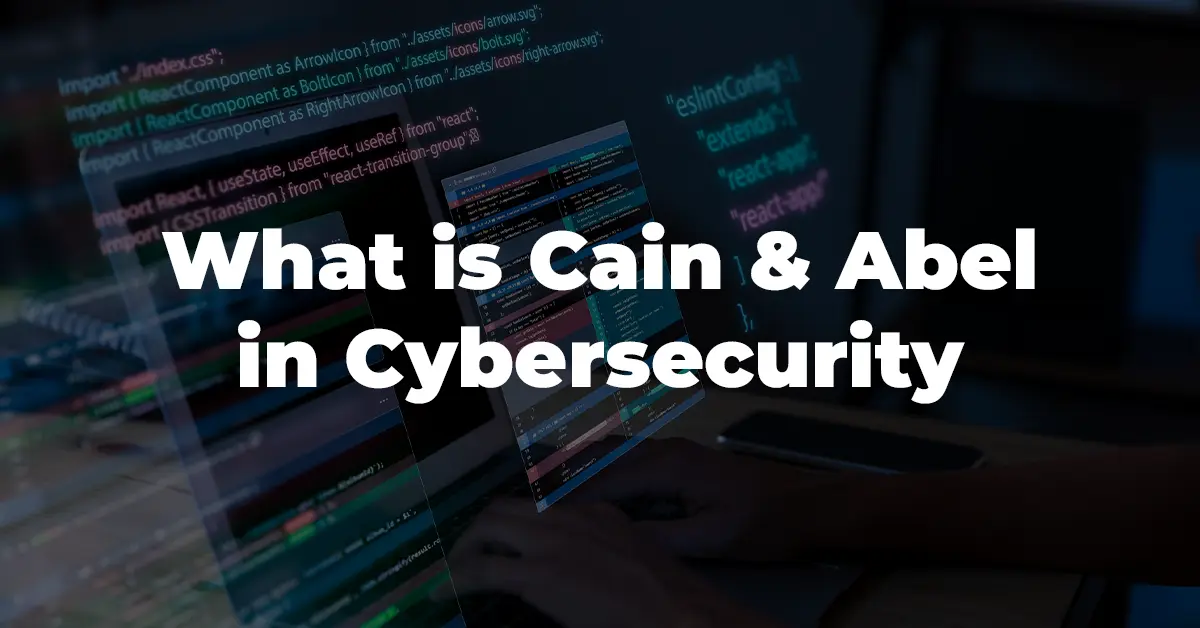Generative AI is rapidly transforming the digital landscape, with applications spanning healthcare, finance, education, and now cybersecurity. Technologies like large language models (LLMs), diffusion models, and generative adversarial networks (GANs) are enabling machines to produce human-like text, executable code, synthetic images, and realistic simulations. This breakthrough in machine learning is no longer just a research innovation—it’s actively being adopted across industries to enhance productivity, reduce manual workloads, and accelerate decision-making.
In cybersecurity, generative AI is emerging as both a powerful defense mechanism and a potential threat. On the defensive side, organizations are leveraging AI to automate incident responses, simulate cyberattacks for red team exercises, and uncover complex threats in real time. On the offensive side, malicious actors can misuse the same technology to craft phishing emails, generate malware code, and bypass detection systems. This dual-use nature makes generative AI a pivotal subject of discussion in modern cyber defense. This article explores how generative AI works, its core technologies, real-world use cases in cybersecurity, the benefits and risks involved, and what the future holds for this rapidly evolving field.
What Is Generative AI?
Definition and Core Concepts
Generative AI refers to a category of machine learning models designed to create new content that mimics the patterns and structure of existing data. Unlike traditional AI systems that classify or predict based on input, generative models are capable of producing entirely new outputs—whether it’s generating a block of code, writing a detailed report, creating a phishing simulation, or designing synthetic network traffic for analysis. These models are trained on large datasets and learn to understand the relationships between different types of data. As a result, they can produce outputs that are coherent, contextually relevant, and often indistinguishable from human-created content.
In the context of cybersecurity, generative AI can be used to simulate attack vectors, automate security documentation, generate configuration scripts, or even mimic adversarial behavior in red team operations. Its ability to continuously learn and adapt makes it a valuable tool for both defenders seeking automation and attackers aiming for stealth.
Key Technologies Used
Several key technologies underpin generative AI, with each playing a different role in cybersecurity applications. Generative Pre-trained Transformers (GPT) are among the most widely known, capable of generating human-like text, analyzing logs, writing code, and even simulating phishing attempts or security workflows. Generative Adversarial Networks (GANs) consist of two competing neural networks—one that generates data and another that evaluates it. This structure enables GANs to produce highly realistic outputs, such as synthetic faces or network traffic patterns used in training detection systems.
Another foundational technology is the Transformer architecture, which powers not only GPT models but also BERT and other advanced NLP frameworks. Transformers enable efficient parallel processing of sequential data, making them ideal for tasks like real-time log analysis, threat correlation, and summarizing threat intelligence feeds. These technologies form the backbone of generative AI in cybersecurity, enabling both offensive simulations and defensive automation at a scale never previously possible.
Cybersecurity Challenges Generative AI Can Help Solve
Detecting Sophisticated Threats
Modern cyber threats are more dynamic and evasive than ever, often bypassing traditional rule-based detection systems. Generative AI provides a significant advantage by analyzing massive volumes of structured and unstructured data across endpoints, networks, and cloud environments. These models excel at recognizing hidden patterns, behavioral anomalies, and novel attack signatures that human analysts or legacy tools may miss. For example, generative models trained on historical breach data can simulate attack paths or predict how an adversary might navigate a system—helping security teams proactively shore up defenses. This ability to detect unknown threats in real time is critical in defending against advanced persistent threats (APTs), zero-day exploits, and polymorphic malware.
Automating Threat Intelligence
Threat intelligence gathering often involves parsing thousands of logs, alerts, social feeds, and dark web indicators—an overwhelming volume of data for human teams alone. Generative AI streamlines this process by automating the classification, summarization, and synthesis of raw threat intelligence into actionable insights. Language models like GPT can be fine-tuned to monitor threat feeds, extract indicators of compromise (IOCs), and even write structured threat reports that analysts can use for decision-making. These AI-generated summaries not only reduce cognitive load but also help organizations respond faster and more accurately to emerging threats, while ensuring consistent documentation across the board.
Enhancing Incident Response
During a cyber incident, time is critical—and delays can lead to significant financial and reputational damage. Generative AI can assist by automating parts of the incident response lifecycle. For instance, AI can generate predefined response playbooks, tailored to specific incident types, that guide analysts through remediation steps. It can also auto-generate security tickets, suggest priority levels, and triage alerts based on contextual analysis. In some environments, generative models are even integrated into SOAR (Security Orchestration, Automation, and Response) platforms to produce real-time scripts or commands for containment and recovery. This augmentation not only improves response time but also frees up analysts to focus on higher-level decision-making during crises.
Practical Use Cases of Generative AI in Cybersecurity
Phishing Email Detection and Simulation
Phishing remains one of the most successful initial attack vectors, often bypassing traditional filters through increasingly sophisticated language and design. Generative AI helps defend against this by analyzing the structure, tone, and intent of email content to flag subtle indicators of phishing that might evade conventional detection. At the same time, security teams are using AI models to simulate phishing campaigns internally—generating realistic emails for employee training. These simulated attacks improve phishing resilience by exposing users to authentic-looking bait, allowing organizations to test awareness and response without exposing real data.
Malware Code Analysis and Generation
The arms race in malware development has led to rapidly evolving threats that are harder to detect and analyze manually. Generative models can aid reverse engineering by analyzing obfuscated code and producing human-readable summaries of malware behavior. In research and sandboxed environments, AI can even simulate malware code to study its logic, delivery methods, and potential impact. This is especially valuable for anticipating how a new malware strain might evolve or testing endpoint protection systems under controlled conditions. The ability to generate variants helps defenders stay ahead by training detection models on synthetic yet realistic threats.
Vulnerability Discovery and Patch Generation
Code vulnerabilities often go unnoticed until exploited, especially in large or legacy codebases. Generative AI is now being used to scan source code and identify logical flaws, insecure functions, and poor configurations—faster than manual reviews. Some models can even propose or generate contextual patch suggestions, reducing the time between discovery and remediation. This capability not only enhances developer productivity but also plays a key role in secure software development lifecycles (SDLC) by embedding automated security checks during coding and CI/CD processes.
Identity and Access Anomaly Detection
Generative models are increasingly being used to model baseline user behavior, analyzing login patterns, file access habits, or time-based usage metrics. By establishing this behavioral context, AI can detect deviations that signal compromised accounts or insider threats. Unlike rigid rule-based systems, generative AI adapts to evolving behavior, allowing for more accurate detection of anomalies in identity and access management. This is especially critical in hybrid and remote work environments, where access activity is more varied and harder to monitor manually.
Red Teaming and Adversarial Simulation
Red teams are beginning to incorporate generative AI into their toolkits to simulate highly advanced attack scenarios. AI can be trained to craft spear-phishing messages, develop payloads, and simulate lateral movement—mimicking the behavior of real-world threat actors. This helps organizations test their blue team’s response against a broader set of attack strategies, many of which are dynamically generated by AI models. These adversarial simulations are essential for preparing defenses against AI-assisted threats, which are becoming more prevalent among sophisticated attackers.
Benefits of Using Generative AI in Cybersecurity
Speed and Scalability
One of the most significant advantages of generative AI in cybersecurity is its ability to process and analyze data at scale with remarkable speed. Security teams face millions of logs, alerts, and anomalies every day, and manually sifting through this volume is time-consuming and inefficient. Generative AI models can automate tasks like log parsing, threat classification, and alert correlation across diverse systems, reducing detection and response times from hours to minutes. This speed is especially critical during active breaches, where real-time insights can determine whether an incident is contained or escalates.
Improved Accuracy in Detection
Traditional cybersecurity tools often struggle with high false positive rates, overwhelming analysts with benign alerts. Generative AI significantly enhances threat detection accuracy by identifying context and intent, rather than relying solely on static signatures or predefined rules. These models can detect subtle, previously unknown attack vectors by analyzing behavior, correlating indicators of compromise, and learning from historical incidents. As a result, organizations benefit from fewer false alarms and better identification of advanced persistent threats (APTs), reducing alert fatigue and improving response effectiveness.
Resource Optimization
Generative AI helps bridge the cybersecurity talent gap by allowing smaller teams to operate with the sophistication of larger security operations centers. Routine tasks—such as generating incident reports, writing detection rules, or drafting playbooks—can be automated, freeing analysts to focus on strategic planning and proactive defense. AI also enables real-time decision support, empowering junior staff to make confident choices with the help of machine-generated insights. This results in greater efficiency, reduced operational costs, and faster incident handling without compromising quality.
Risks and Ethical Concerns of Generative AI in Security
Dual-Use Nature of AI
Generative AI’s capabilities are neutral—but their use is not. The same technology that helps defenders simulate phishing attacks or generate secure code can be used by attackers to craft malicious payloads, bypass security controls, and spread misinformation. This dual-use dilemma raises ethical concerns and regulatory red flags. It also underscores the need for strict access controls, ethical usage policies, and continual monitoring to prevent unintended or malicious use of AI-powered tools in cybersecurity environments.
AI Hallucinations and Misinformation
Despite their power, generative models are not infallible. They can produce plausible-sounding but incorrect or misleading outputs, a phenomenon known as hallucination. In a cybersecurity context, this can be dangerous—an AI might generate an inaccurate attack summary, suggest the wrong remediation step, or misclassify a threat. If these outputs are trusted blindly, it could lead to misinformed responses, missed attacks, or even increased exposure. This highlights the need for human validation and contextual review of AI-generated content in critical security workflows.
Regulatory and Compliance Challenges
As generative AI becomes integrated into security operations, organizations must address compliance and governance concerns. Many industries are subject to strict data protection regulations such as GDPR, HIPAA, or PCI-DSS, which require transparency in decision-making and proper handling of sensitive data. However, AI models often lack explainability—the ability to clearly articulate how decisions are made. This creates friction when auditors or regulators demand accountability. Organizations must establish clear policies for AI usage, ensure proper logging and traceability, and implement governance frameworks to stay compliant while benefiting from AI.
Conclusion – Preparing for an AI-Powered Security Future
Generative AI is ushering in a new era for cybersecurity—one where speed, automation, and intelligence are no longer luxuries but necessities. From detecting advanced threats and simulating attacks to accelerating incident response and optimizing limited resources, these technologies are fundamentally reshaping how organizations protect their digital assets. As threats become more sophisticated, so too must the tools and strategies used to defend against them.
However, the power of generative AI comes with significant responsibility. Security leaders must balance innovation with caution, ensuring that AI adoption is guided by ethical principles, regulatory compliance, and human oversight. CISOs and cybersecurity teams should invest in understanding the capabilities and limitations of these tools, pilot them in controlled environments, and develop governance frameworks to prevent misuse. As the landscape evolves, those who approach AI with strategic intent and a security-first mindset will be best positioned to lead in the future of cyber defense.







